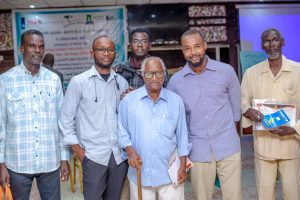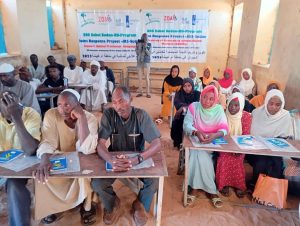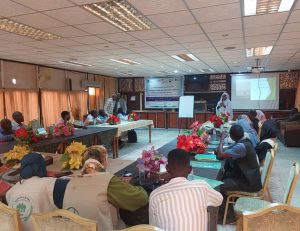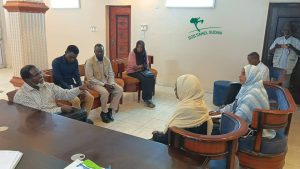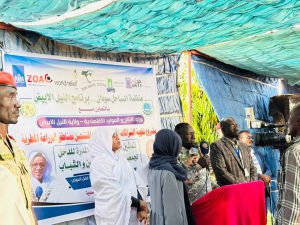Peace building project through reforming the social fabric
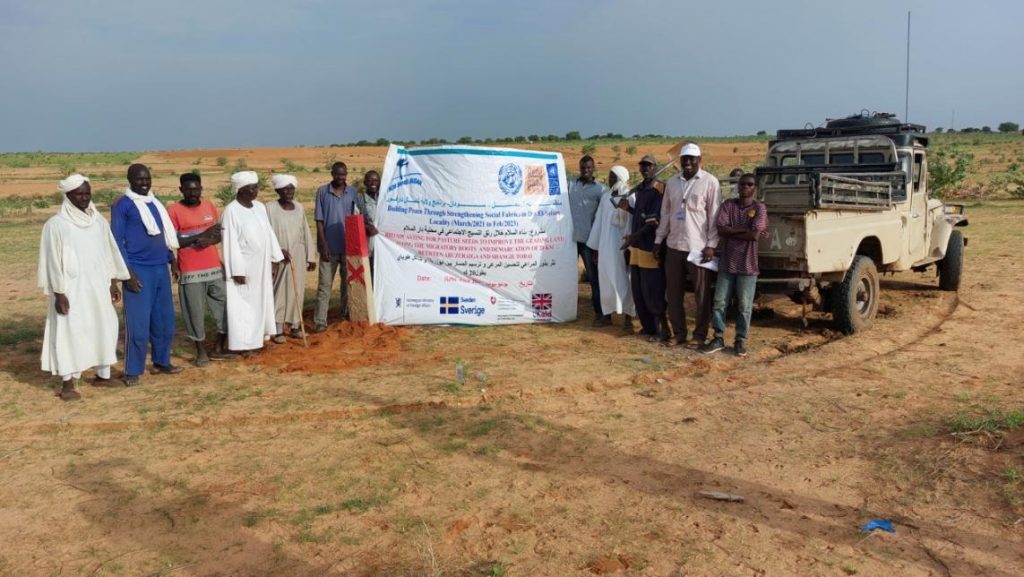
Funding body: Darfur Community Fund for Peace and Stability (UNDP/DCPSF)
Project budget: – 350,000 dollars
The number of beneficiaries: 48,360, the number of men (32,527 – and women – 15,788).
The general objective of the project: Strengthening peace and reconciliation committees for peaceful coexistence and mending the social fabric between the communities of Abu Zareka and Shangil Tobay.
Achievements:-
• After establishing Peace and Reconciliation Committees, which consisted of civil administrations, youth, women, service and change committees, and residency committees, and training them, the committee contributed to resolving 98% of societal issues related to community conflict. Community awareness of the culture of peace and peaceful coexistence increased, and as a result The framework signature of some discordant groups (Zaghawa and Arabs) took place. There is also an ongoing community dialogue for peaceful coexistence between Abu Zareka and Shangil Tobay. It is expected before the end of the project that a community peace will occur between the two regions.
Providing water and easy access to it through the maintenance of 2 community wells and the installation of a well that works with the dual system (fuel and solar energy)
• Maintenance of 8 pumps at a rate of up to 80% in the targeted areas, which helped women not be subjected to violence and thus reduced conflict.
• Providing sources of income for young people, such as solar energy to charge mobiles, and for women selling tea and foods, by providing work aids and training to increase income and run a business.
• Supporting the civil administration at the level of the administrative units of Abu Zareqa and Shangil Tobay with solar energy as a source of income and providing some equipment (chairs, water diapers and mattresses) while activating their role in the community.
• Providing livelihoods such as improved seeds, machines and training that helped raise agricultural awareness and thus increase production.
• Training those targeted on the importance of peaceful coexistence for the three units in the locality
• Building a multi-purpose community center in Abu Zureika to contribute to sustainability after the end of the project.
• Providing 2 youth watching clubs for the World Cup events and what follows from tournaments and so on in each of Hillat Ahmed in the administrative unit Shangil Tobay and Abu Dawil “B” in the administrative unit Abu Zareqa, which are central areas with the other areas of the project, which led to more communication and coexistence between communities and also a source of income for the development of regions
• Rehabilitation and improvement of pasture areas of 20 hectares
Challenges:
• Security problems in the project areas throughout the implementation period
• The short duration of the project, in addition to the weakness of the project budget compared to the planned activities
• High fuel, therefore high commodities and deportation
• Failure to implement Juba peace on the ground, especially in the project areas, in the required manner, which impeded peace building in the desired manner
• Lack of community services (health, education, water…etc) despite the project’s interventions
Lessons learned:
Involving women and youth in peace and reconciliation committees helped in understanding and resolving many issues, especially those related to youth and women.
Building trust between communities, accepting each other, and creating a vision that helped build peace in communities.
Forums, meetings, sports competitions and exchange visits contributed to more peaceful coexistence and community communication.
The large number of activities made the project somewhat flabby, which led to the dissipation of the budget, while it is better to do integrated and simple activities that achieve the purpose of the project.
